Ten Examples That Show Trail Tourism Works
These ten stories show that trail tourism is invigorating communities throughout America.
by
American Trails Staff
One major benefit of trail tourism is that it is money spent in rural towns and in more economically disadvantaged areas. Many of the people traveling to a trail and spending a night or more in the area are economically well off and have significant discretionary income.
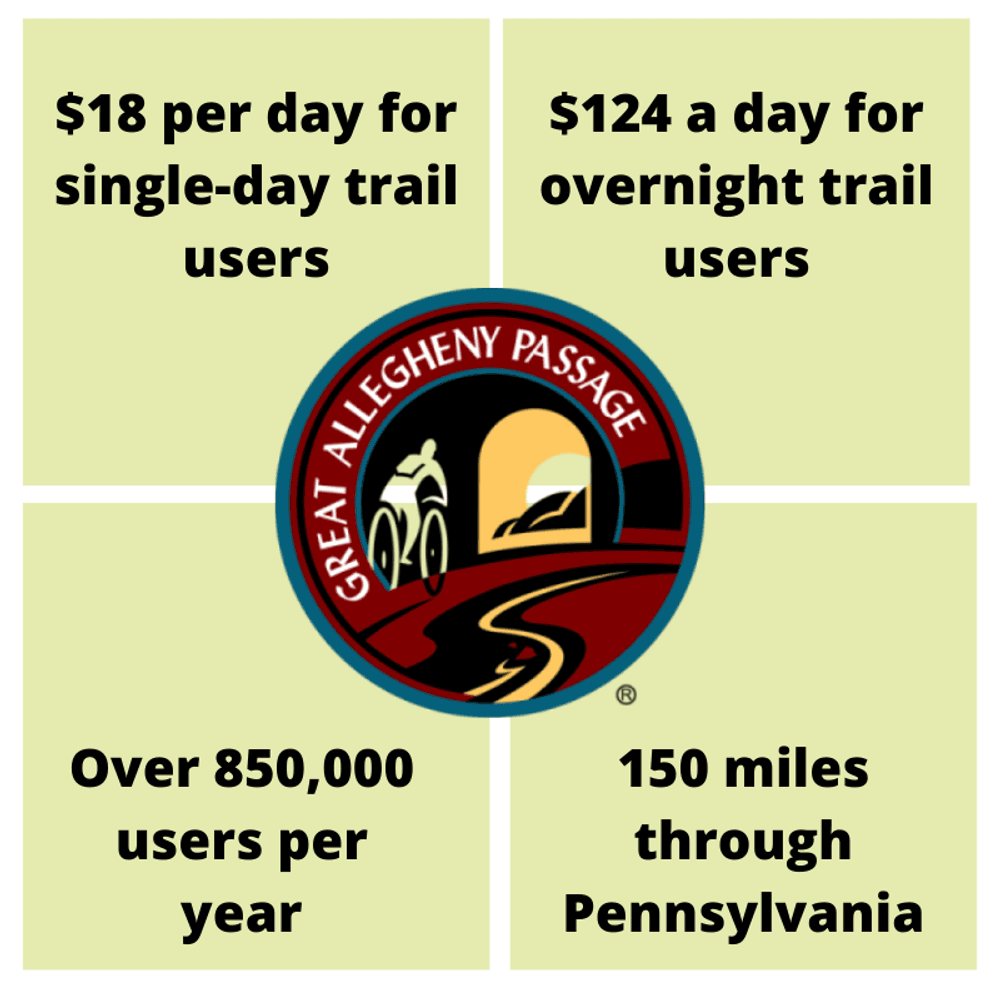
A study from the Progress Fund Initiative showed trail tourism on The Great Allegheny Passage generated an average of $18 per day for single-day trail users, and $124 a day for overnight trail users. This trail sees well over 850,000 users per year.
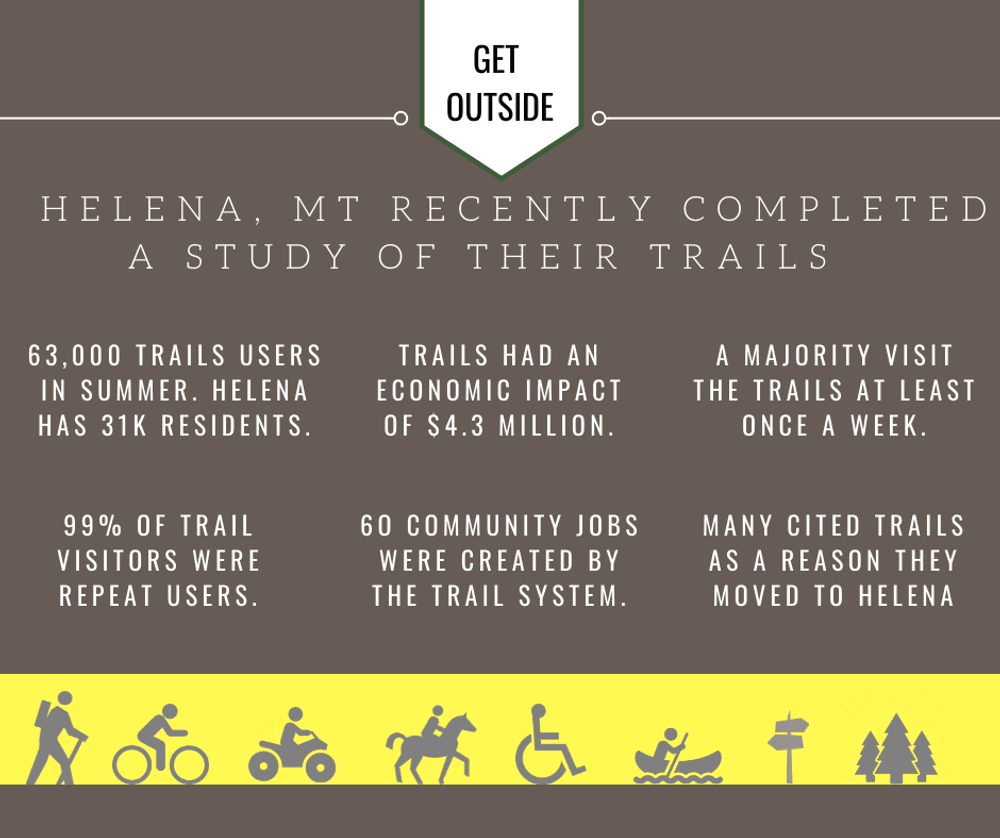
A 2018 study from Helena, Montana showed their South Hills trail system generating $4.3 million in economic impact annually from 63,000 users. Helena itself has a population of around 32,000 residents, so the majority of trail users are tourists.
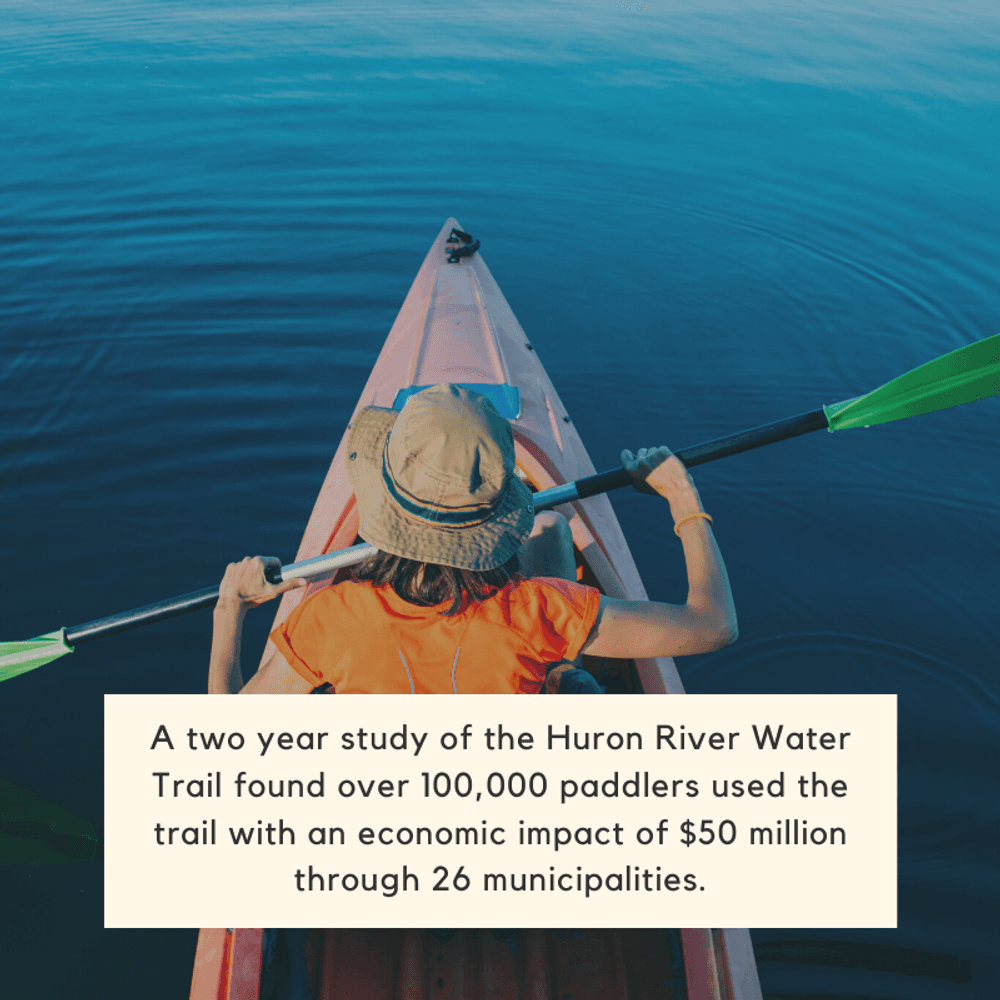
Michigan's Huron River Water Trail is a 104-mile inland paddling trail that generates large economic impacts through trail users. A 2013 economic analysis showed this impact for the 26 municipalities located along the trail.
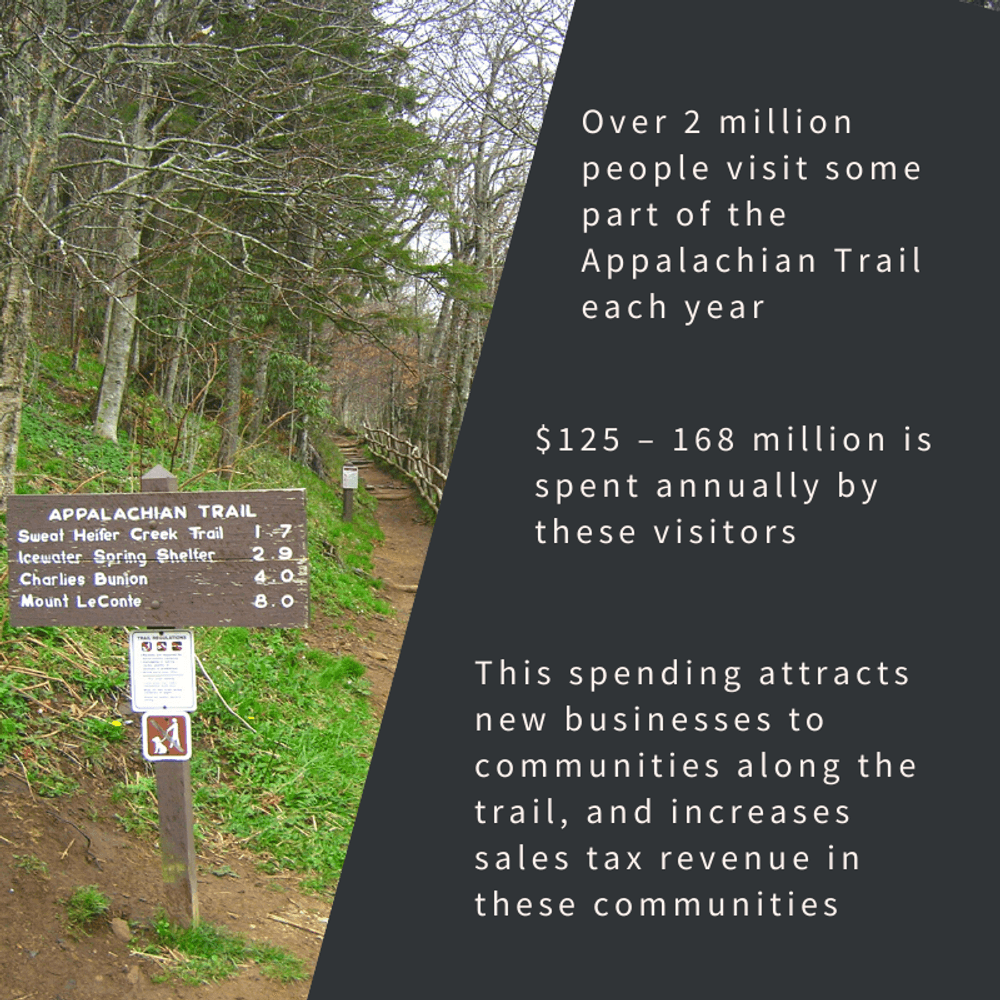
The Appalachian Trail runs over 2,000 miles and through 14 states from Georgia to Maine. Millions of trail users visit the trail every year creating a measurable economic impact in trail adjacent communities. More information on benefits to Appalachian Trail communities can be found here.
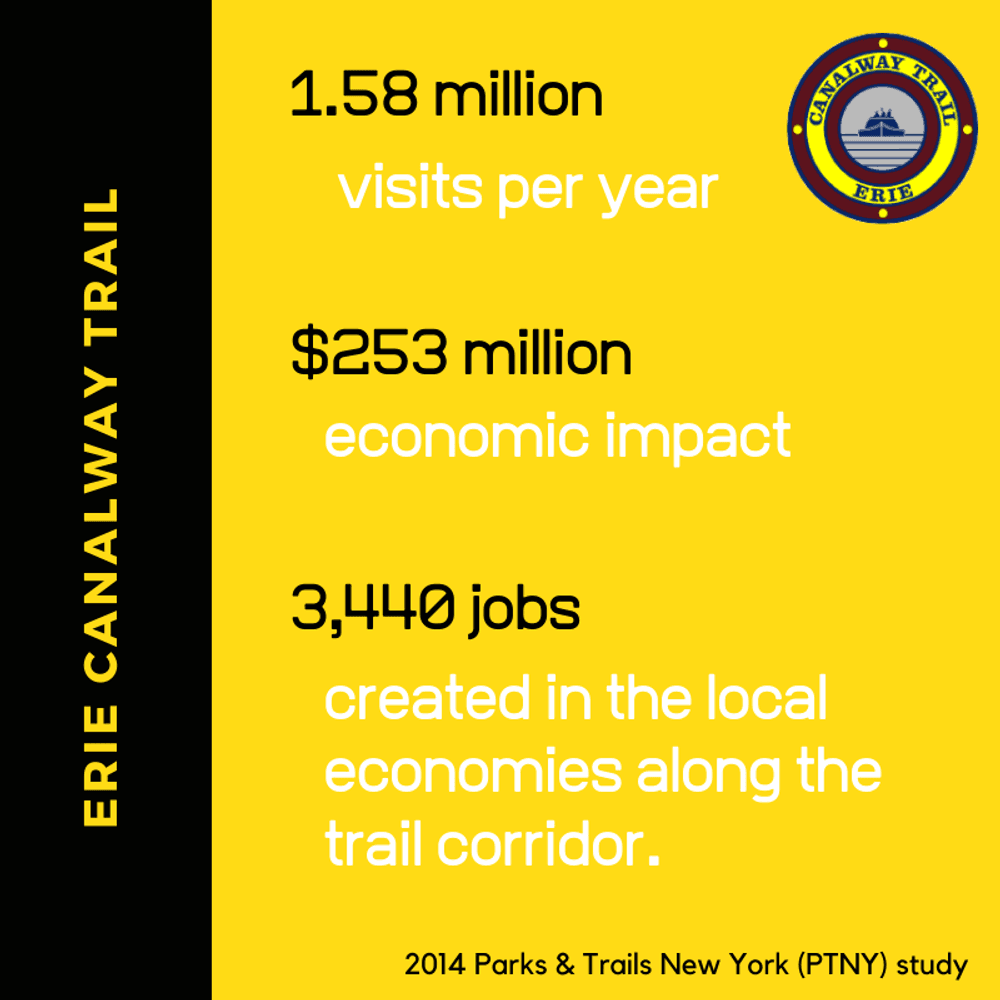
A 2014 study from Parks & Trails New York (PTNY), The Economic Impact of the Erie Canalway Trail: An Assessment and User Profile of New York's Longest Multi-use Trail, showed huge profits from trail tourism. Overnight stays and other tourism spending had a major impact on the economic contribution to communities along the trail corridor.
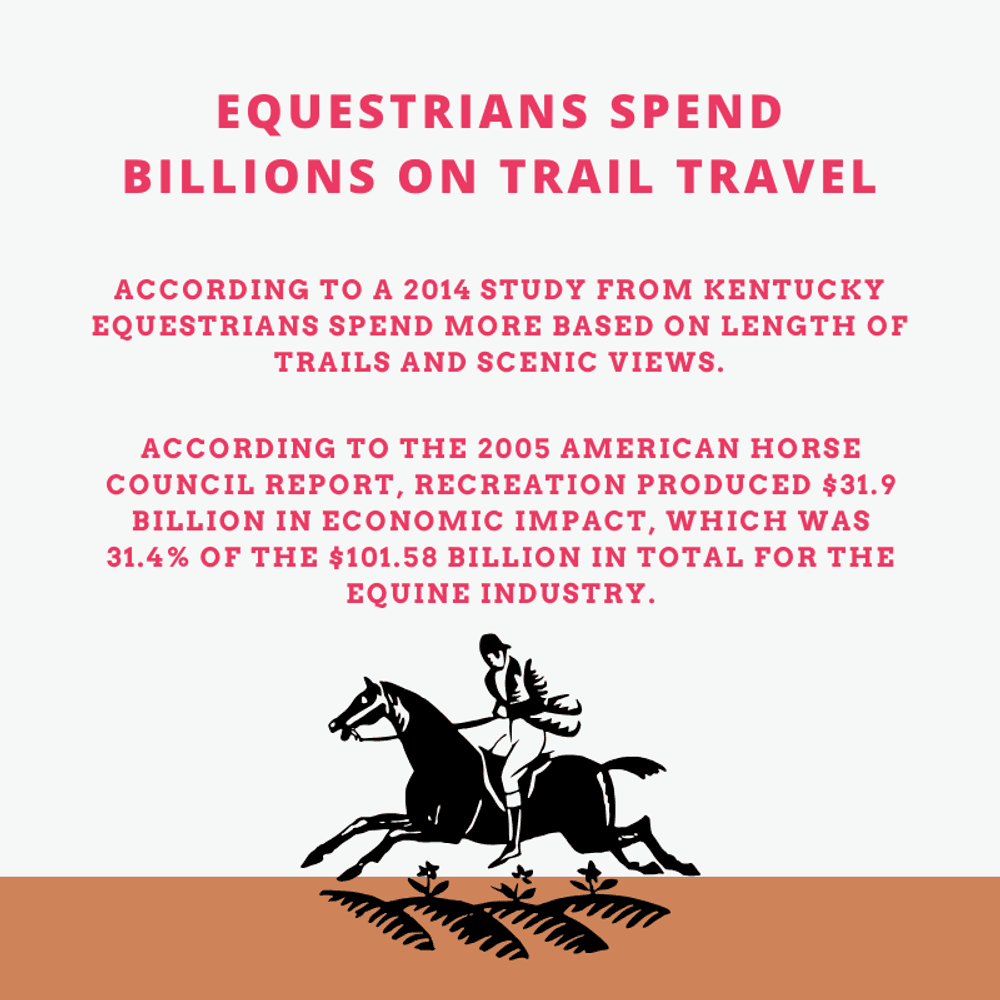
Equestrian users can have a huge economic impact due to trail spending, as shown in a 2014 study from that "Used choice experiment data collected from a survey conducted in Kentucky, this study assesses rider preferences and economic values associated with various equestrian trail attributes for horseback riding trips in rural trail systems."
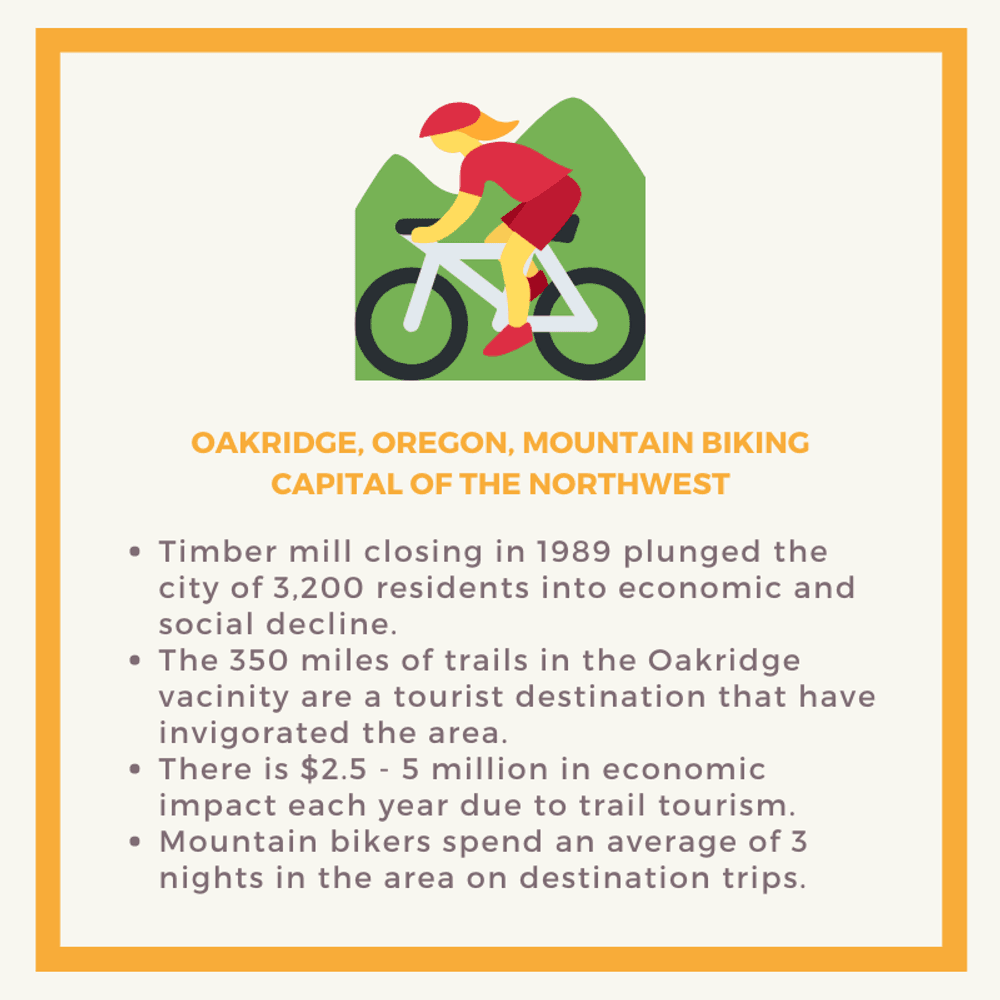
Trail tourism can be a huge economic boost for communities in transition due to job loss or industry closures. One example of this would be cycling tourism in Oakridge, Oregon. A 2014 study showed significant spending in the community, which helped revitalize the local economy after the loss of timber jobs had devastating effects.
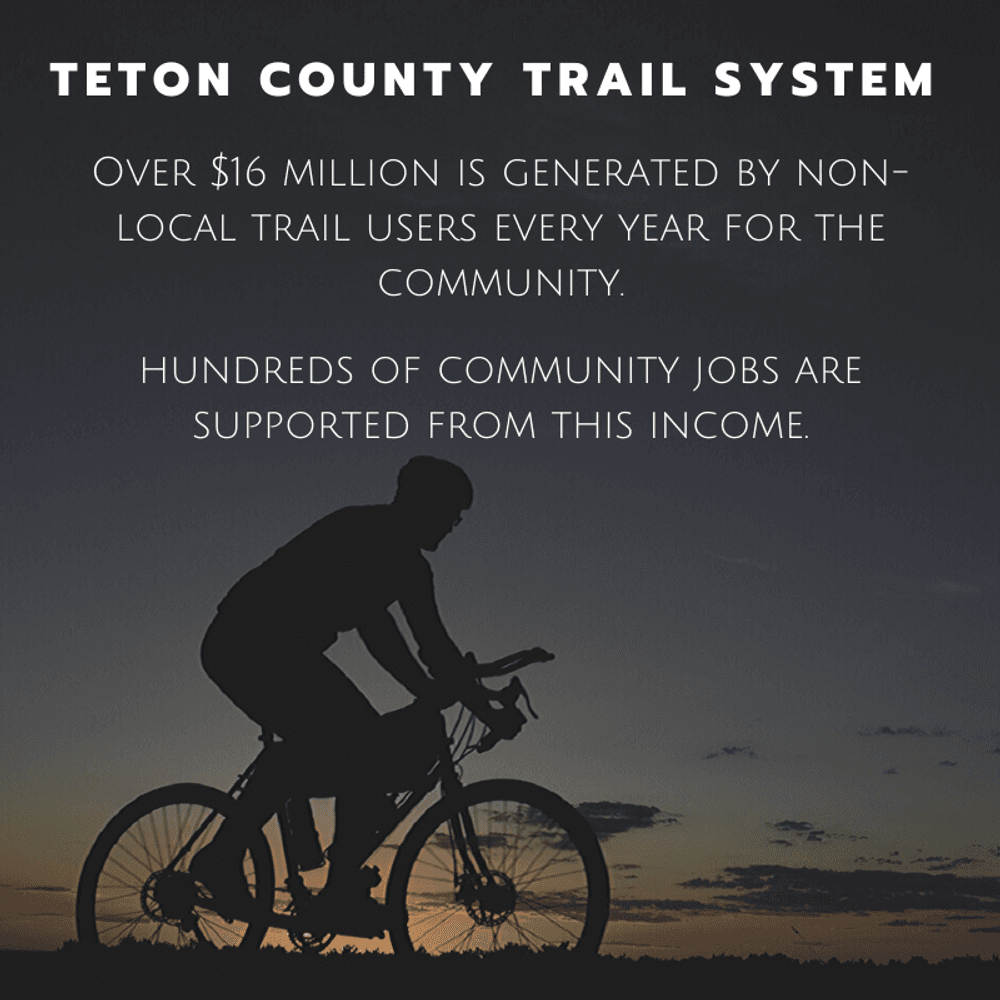
Through surveys, bike shop questionnaires, guide service interviews, and literature research, a study concluded that the Teton County trail system in Wyoming generated an estimated $18,070,123 million in economic activity in 2010. Approximately $1,109,588 million was generated by local trail users and $16,960,535 million by non-local trail users. Employment and wages relating to the trail system in Teton County totaled $3.6 million with approximately 213 workers employed in the summer and fall of 2010. (Jackson Hole Trails Project Economic Impact Study, 2011)
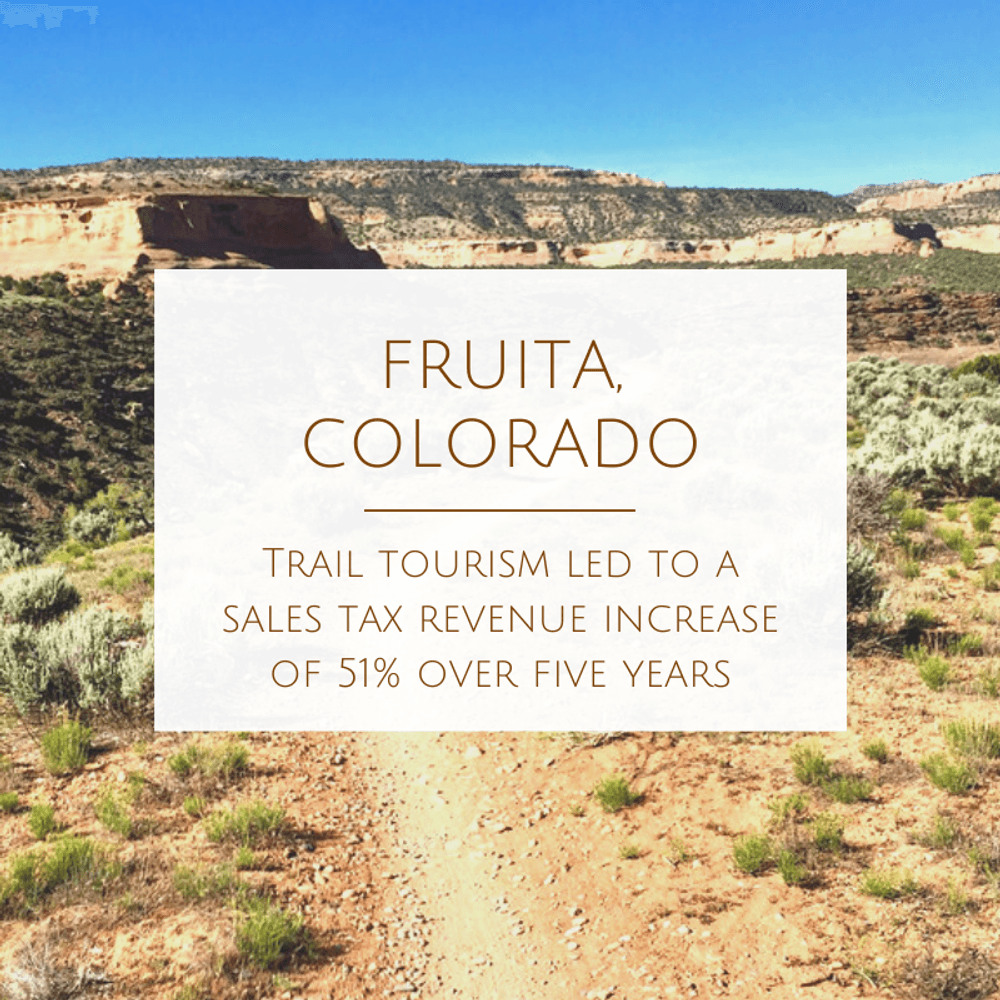
Fruita, Colorado has earned a reputation as a world-class mountain biking destination, where trail tourism pumps over $1.5 million a year into the local economy, according to the Bureau of Land Management. A study found that Fruita’s sales tax revenues increased by 51% over five years in the early 2000's as trail tourism increased, including an 80% increase in sales tax revenues from restaurants. (Outdoor Industry Foundation, from Bureau of Land Management North Fruita Desert Management Plan, 2004)
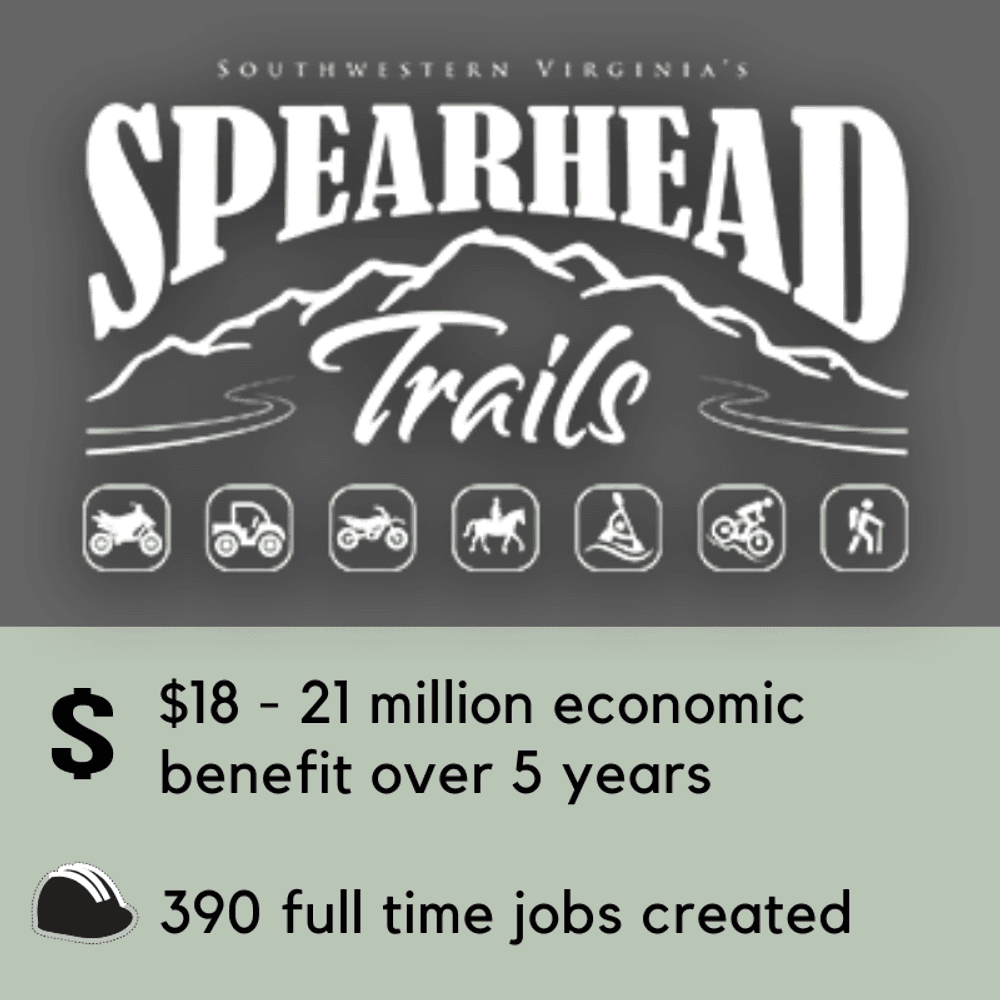
A five year study of the Spearhead ATV Trail System in Virginia showed an economic benefit of $18 - 21 million between opening in 2012 thru 2017. The trail system created up to 390 full time jobs in an economically depressed area.
More articles by this author
More articles in this category
2022 CDT Small Business Survey
posted Feb 14, 2023
From August to December 2021, the Continental Divide Trail Coalition surveyed 136 small business owners in 38 communities located along the Continental Divide Trail to learn more about how the Continental Divide Trail impacts their businesses, the local economy, and their support for public lands.
Impact of Trails Hub
posted Apr 11, 2022
Everything you need to know about the positive impact of trails on health, environment, economics, and more.
Five Iconic Trails Under 50 Miles
posted Feb 15, 2021
A trail need not be over 100 miles in length to become a travel destination. Plenty of people desire shorter trail experiences and are willing to design a trip around them just the same.
5,939 views • posted 01/16/2020




